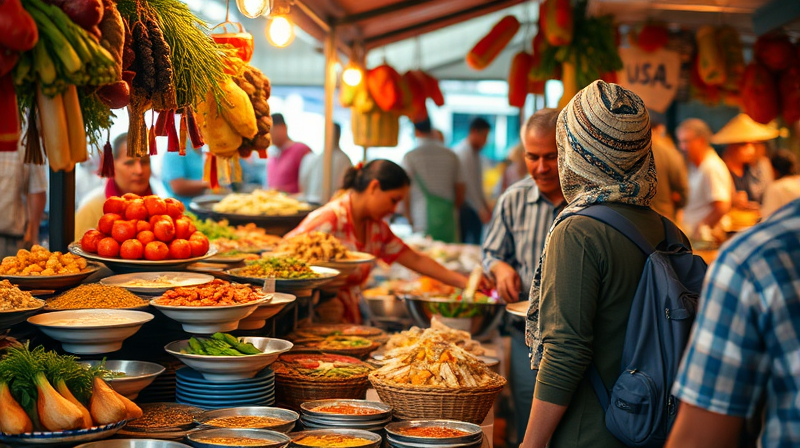Traveling is not just about sightseeing; it is about immersing yourself in new cultures and traditions. One of the most fulfilling ways to experience a destination is through its food. In today's interconnected world, eating locally has grown into a movement that supports sustainability, celebrates cultural heritage, and delivers unforgettable gastronomic experiences.
Eating like a local is an art that requires curiosity and an open mind. It goes far beyond visiting trendy restaurants – it means engaging with regional food systems, learning about the ingredients that define a culture, and even understanding the history behind every dish.
Understanding Local Food Culture
The essence of local eating lies in reconnecting with the origins of your food. Historically, most communities relied heavily on homegrown produce and local markets. Today, we often lose that intimate connection with our food sources. However, by choosing to eat local, you support regional farmers and artisans, thereby boosting your local economy and reducing environmental impacts.
It is important to value the expertise of local cooks who have inherited centuries-old culinary wisdom. Their methods of seasoning, preserving, and blending ingredients have been refined over generations. This practice not only honors tradition, but it also nurtures a sustainable culture that respects the land and its bounty.
By participating in the local culinary scene, you create your own culinary adventures that lead to unexpected flavors and delightful discoveries.
Travel-Based Culinary Exploration
A great way to dive deep into a new food culture is by engaging directly with the local community. Here are several practical methods:
- Take a Cooking Class: Enroll in a cooking class offered by local chefs. This firsthand experience allows you to learn about indigenous ingredients and authentic techniques that you can bring home. Enjoy the satisfaction of creating and savoring a meal that represents the local spirit.
- Explore Walkable Food Districts: Urban centers often feature neighborhoods dedicated to culinary art. These areas offer a vibrant mix of eateries, cafes, and street food vendors where you can sample a variety of dishes. Explore these districts on foot and let your senses guide you to hidden gems.
- Seek Out Indigenous Cuisine: Embrace the flavors of indigenous communities by trying traditional dishes. This might mean sampling unique ingredients like native root vegetables, locally sourced seafood, or traditional breads. Such experiences provide a direct link to the cultural and natural history of a place.
These strategies not only enhance your travel experience but also encourage you to appreciate the authenticity behind every recipe you taste.
2025 Food Trends Supporting Local Eating
The culinary landscape in 2025 is marked by several influential trends that champion local eating. One such trend is the fusion of global flavors with local ingredients. Chefs are challenging conventions by blending internationally inspired spices with homegrown produce to create innovative dishes.
Another prominent trend is the surge in plant-based explorations. This movement is all about using minimal processing techniques to craft delicious meals from natural, local ingredients. Whole-food ingredients such as mushrooms, algae, and locally harvested seaweed offer sustainable alternatives that do not compromise on taste or health.
Moreover, simplicity and seasonality have become key principles in modern cooking. By focusing on the natural flavors of locally available produce, chefs create dishes that honor the natural rhythm of the seasons and reduce reliance on heavily modified ingredients.
Practical Tips for Eating Locally
Adopting a local eating style at home or while traveling is easier than you might think. Follow these practical tips to make the most of your culinary journey:
- Match Cuisines to Your Climate: Look for similarities between your local climate and those of foreign regions. For example, residents in colder climates can explore recipes from Russia or Scandinavia, which focus on hearty root vegetables and fresh, seasonal produce.
- Embrace Chaos Cuisine: Experiment with combining flavors from diverse cultural backgrounds. This trend encourages creativity—mix local ingredients with global cooking techniques to create unexpected yet delicious results.
- Support Local Food Systems: Make a conscious effort to source your ingredients from local businesses. Whether it is a farmer's market, an artisanal bakery, or a community-supported agriculture program, every purchase contributes to a healthier local ecosystem.
By employing these strategies, you not only enjoy exceptional meals, but you also help maintain a more sustainable and culturally rich food landscape. Your choices matter and can lead to broader environmental benefits and economic support for your community.
Ultimately, the journey of eating like a local is one that goes beyond the plate. It is about understanding the intimacy between a community and the land, embracing a variety of culinary practices, and finding joy in every savory bite. With an open mind, a sense of adventure, and these expert tips in your pocket, you are well-equipped to explore and savor the diverse food traditions that every destination has to offer.
Allow your culinary curiosity to guide you, and let every meal be a story of local heritage, innovation, and the timeless pleasure of food. Step out, explore, and enjoy the increasingly rewarding world of local culinary exploration!








